A vue of 1000 years dramatic history
Text and photos Erik K Abrahamsen
Kings New Square – established 1670-87 by King Christian 5, king of Denmark and Norway 1670-99:

The era of King Christian 4, king of Denmark and Norway 1588-1648 is an era of ups and downs.
He build unique palaces, fortress, churces, dubble the size of Copenhagen
– but when he died in 1648, he had lost large provinces in Denmark and Norway to Sweden
Kings New Square – established 1670-87 by King Christian 5, king of Denmark and Norway 1670-99:
Click on the map and use your zoom control and you see it in full screen size:

The history of Copenhagen is Denmarks history marked by ups and downs. Long periods of economic revival in the Middle Ages and i 16-17oo century with large construction activity by churches, monasteries, castles, palaces, ramparts and fortress, squares and beautiful houses.
Something has gone caused by attacks and lootings by invaders and the large fires in 1728 and 1795. These 2 fires destroyed thousands of houses in the old city – but incredibly much has been preserved until to day!
Open your eyes wide open – the city and its history is under your feet, under you and around you – ready to play.
I will guide you through the history by walking through selected parts of the oldest Copenhagen within the city walls. Its a trip where you need your eyes and your imagination to feel and experience the history drama as it unfolded precisely the places we will visit.
Click on the map and use your zoom control and you see it in full screen size:
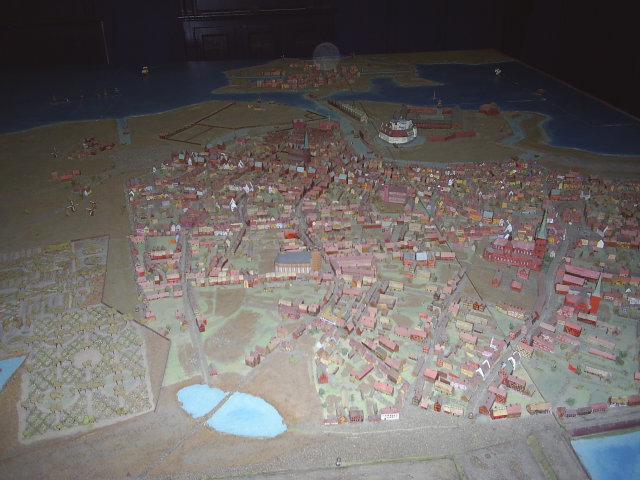
Map of Copenhagen City:
Click on the map and use your zoom control and you see it in full screen size. Photo: Erik K Abrahamsen, 10. october 2012
We begin our walk on Kongens Nytorv.
The main shopping walking street “Strøget” ends and begins at Kongens Nytorv. Here stood The Eastern Gateway “Østerport” to Copenhagen city. About 1600 King Christian 4th decided to extend Copenhagen from here and to Øresund. The King bought large areas northeast of the city to Sct. Anna Skanse at the entrance to Copenhagen Harbour at Øresund. This new area “New Copenhagen” has the size of existing Copenhagen. The King removed existing ramparts at Gothersgade and began the construction of a new ramparts east of the old and “New Copenhagen”. Sct. Anna Skanse was rebuilded to a fortress with 3 bastions in 1640. After the war against Sweden 1657-60 his successor King Frederik 3 completed a new modern fortress constructed by Henrik Ruse, a engineer from Holland: Citadellet Frederikshavn, Kastellet. In New Copenhagen King Christian 4 builded more than 100 houses at Nyboder to men of the Royal Navy.
King Frederik 3 (1648-70) became absolute monarch 1660-61 and decided to establish an estraordinary new square at Østerport: Kongens Nytorv. This square should be the new center of Copenhagen: drill ground for the army of the city surrounded of palaces and mansions of the new elite of power. The square was completed by his successor King Christian 5th (1670-99) around 1680-90 and with a canal, Nyhavn from Copenhagen Harbour directly to Kongens Nytorv to stimulate trade.
Kongens Nytorv was the center of the fortress around all Copenhagen with ramparts and 12 bastions north, east and west of the city and futher ramparts and 12 bastions south of the city at Christianshavn to protection against foreign invaders from Amager and Øresund. The central fortress was Citadellet Frederikshavn (Kastellet) at Øresund and at the entrance to Copenhagen Harbour.
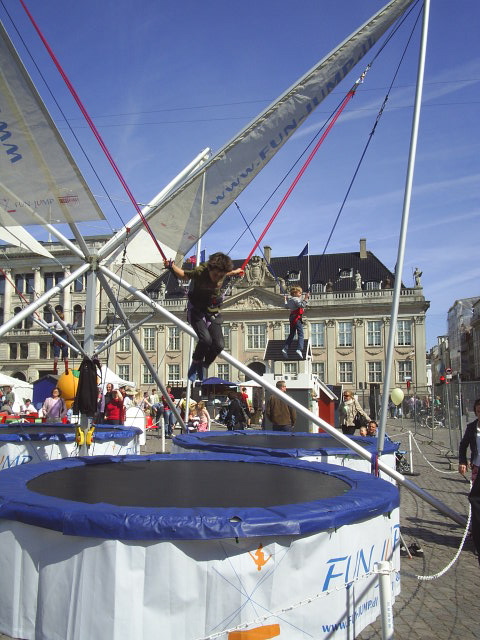
The era of King Christian 4th (1588 – 1648):
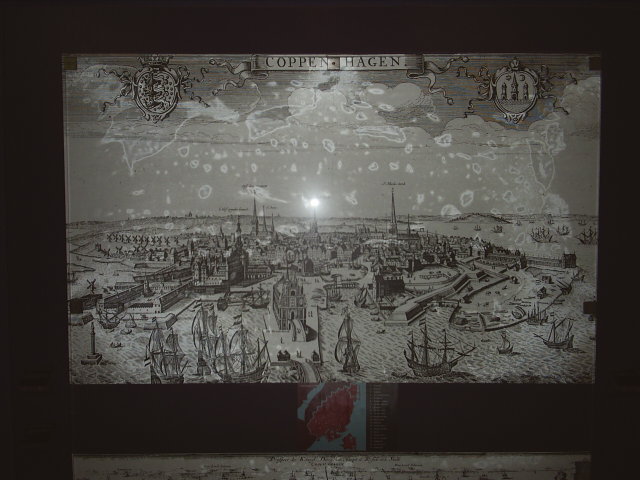
King Christian 4th born 1577 was coronated in Vor Frue Kirke as King of Denmark and Norway in 1596 – 19 years old. Untill he got engaged in the 30 years Religion War in Germany and lost a battle in North Germany at Lutter am Barenberg in 1626 he was the most rich and powerfull king in Nothern Europe. Tax money fra Øresundstolden financed new buildings, new cities, fortress and ramparts all over his kingdom in Denmark, Norway, Holsten and Sleswig.
He imported mercantile kwowledge from Nederland, Germany and France. He invited artists of painting and music to Copenhagen.
He builded a new city Christianshavn 1618-20 as a fortress to protection of Copenhagen Castle, new harbour Provianthavnen 1620 (today Royal Library Garden), the Stock Exchange Børsen 1619-25, Holmens Kirke 1617-19, The Building Complex: Regensen, Rundetårn and Trinitatiskirken (1618-42), Nyboder houses (1630-40) for the Navy personel and Copenhagen Castle.
In North Zealand he builded Frederiksborg Palace 1602-20 and Kronborg Castle and Fortress. In Norway he founded Christiania 1624 (today Oslo, capital of Norway) and Kristianssand 1641. In Skåne (today Sweden) he founded Kristianopel 1599 and Kristiansstad 1614.
In Holsten (today Germany) he founded Glyckstadt as a city and a fortress – a competitor to Hamburg!
King Christian 4th imported the architechtural style Nederlandsk Renaissance through his master builder Hans van Steenwinckel.
We continue our walk to Gothersgade to the entrance of the Kings Garden, Kongens Have with Rosenborg Palace:
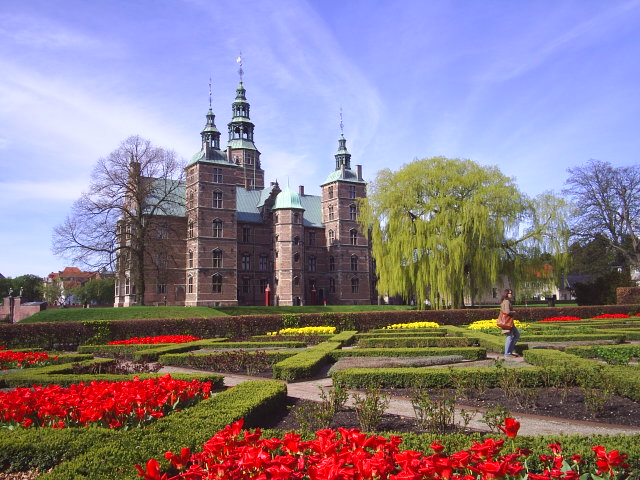
In beginning of 1600 Kongens Have was a garden, which produced vegetables, fruits and berry to the Royal Court at Copenhagen Castle. It was situated outside the old ramparts alongside Gothersgade. In this garden King Christan 4th builded a summerhouse in 1606 and later on he builded and completed in 1638 Rosenborg Palace in style nederland-renaissance – a magnificent castle with a great hall, studies, bedrooms, bathroom with sinked tub and surrounded by moat.
Rosenborg Palace in style nederland-renaissance:
Click on the map and use your zoom control and you see it in full screen size.

Kings Garden, Kongens Have with Rosenborg Palace:
Click on the map and use your zoom control and you see it in full screen size:

King Christian 4th engagement in the 30 years religion war (1618-48) in Germany finished with Peace Treaty in Lybeck 1629. But Denmark-Norway and the King came face to face with a new enemy: the King of Sweden who exspanded his sovereignty in Poland and Nothern Germany. At the same time Holland was dissatisfied of the rising prices of taxes of Øresundstolden. So King Christian 4th had got two enemies!
In 1643 the Swedish King sended his troops into Jutland and Skåne. Two naval battles ended in danish favour: Listerdyb and Colberger Heide, where King Christian 4th as admiral on one of the ships lost one eye.
In 1644 a united Swedish and Holland fleet conquered the Royal Danish Fleet at Femern in Baltic Sea. France, England and Holland did not want a week Denmark-Norway and a too strong Sweden so those countries forced through diplomatic Sweden to make a peace agreement with Denmark- Norway: Brømsebro Peace in 1645: Denmark-Norway lost Gotland, Øsel, Halland in 30 years and 2 large provinces Herjedalen and Jemtland in Norway to Sweden.
But the competition between Denmark/Norway and Sweden had started hundreds of years before. In 1397 all three countries signed a Union called Kalmar Union. To manifest his power over Sweden King Christian 2 of Denmark/Norway executed 80 political opponents of the swedish aristocracy in 1520 in Stockholm. In 1523 Sweden left The Kalmar Union for allways. Nearly 200 years of conflict and wars between Denmark/Norway and Sweden had begun: The Nordic Seven Years War 1563-70, The Kalmar War 1611-13, Torstensson War 1643-45, Karl 10 Gustav War 1657-60, The Skåne War 1675-79, a war in 1700 and the final war Big Nordic War 1709-20.
Finally – 200 years of disharmony had stopped – a new era of coexsistence had begun. Sweden had rised as the new power in The baltic Sea and in Scandinavia!
Norway left the Union with Denmark in 1814 – after 434 years (1380-1814) and joined a Union with Sweden untill 1905, when Norway got independence.
King Christian 4th loved art, music, woman, food and wine – he got 20 children with different women! He have blessed Denmark with those beautifull buildings all over Denmark, Norway and Sweden and Nothern Germany Sleswig/Holsten.
In his beloved Rosenborg Palace King Christian 4th died 1648 after a life in turbulence: Coronated as king in 1596 he received a enormous territory: Denmark, Norway, Sleswig, Holsten, Blekinge, Bohuslen, Halland, Skåne, Øland, Gotland, Øsel near to Estland. In the war with Sweden 1643-45 he lost 2 large provinces Herjedalen and Jæmtland in Norway and The Baltic islands Gotland and Øsel and under the 30 years Religion War in Germany 1618-48 German troops occupied and plundered Jutland and Funen several times from 1627-29.
But the troubles had just begun – it should be much worser!
Only 11 years after his dead, Denmark as a nation was closed to be wiped out!
1. june 1657 King Frederik 3 declared war against Sweden. But he did not know the genious of the new swedish king Karl 10 Gustav and the kwowledge and power of danish traiter nobleman Corfitz Ulfeldt.
The swedish King Karl 10 Gustav did with his military genious occupie all Jutland in autumn 1657 and in winter january-february 1658 he marched with all his army over the ice frozen danish Belts to Funen, Lolland and Zealand in a blitzkrieg. The Danish King Frederik 3 signed a humiliating peace agreement in Roskilde 26 february 1658 and lost to Sweden: Skåne, Halland, Blekinge, Gotland, Bohus province and part of Trondheim province in Norway to Sweden.
In august 1658 Karl 10 Gustav broke the peace agreement and occupied all Zealand and established a total siege of Copenhagen since 11. august 1658.
And in september 1658 Kronborg as the last fortress on Zealand (Sjælland) surrendered to the swedish King 10 Karl Gustav and his troops:
Kronborg Castle, Elsinore, North Sealand.
Click on the map and use your zoom control and you see it in full screen size.

Holland did not want a new superpower in Baltic Sea and the danish straits to the baltic Sea: Øresund, Storebælt and Lillebælt – therefore Holland sended a large Navy to Copenhagen to protect the city from the swedish fleet and to supply the inhabitant of Copenhagen with food and weapons.
The ramparts and the bastions around the mediaval city was reneweled 1630-48 by King Christian 4th and established with moats.
The swedish king Karl 10 Gustav was sly. He began the siege in august 1658 and in the strong winter 1659 he stormed the city the night between 10-11 february 1659. The Copenhagen Harbour and the water in the moat was frosen!
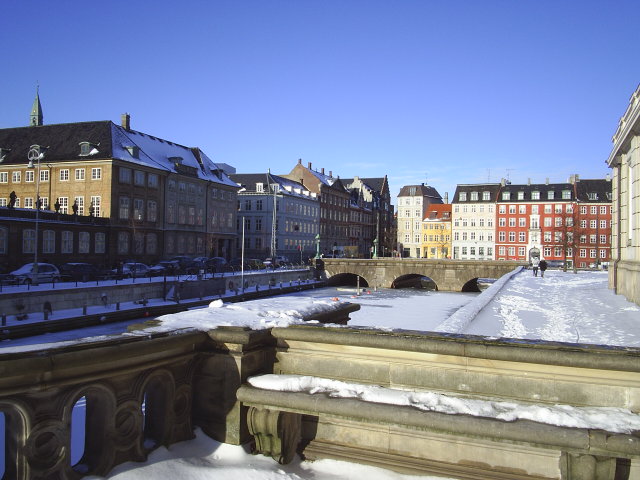
But with help from all the Copenhagen inhabitants, soldiers, marines, students they broke up the ice all over and made openings in the ice. And all over Zealand a resistance movement was established since 1657 called Snaphanebevægelsen. One of the leader of Nortzealand Snaphane Movement was Ridefoged on Hirschholm Palace and Island Hven Lorenz Tuxen. He was a danish spy behind the swedish military lines. 3 days before the swedish attack on Copenhagen ramparts 10-11. february 1659 Lorents Tuxen arrived to Copenhagen to tell King Fredrik 3 all about the swedish plans for the attack: The head attack would be over the ice of Copenhagen Harbour close to the west ramparts at the Storm Bridge (Stormbroen) and Copenhagen Castle and the 2 attacks at eastern ramparts at Østerbro and Christianshavn were feint!
So Copenhagen was ready to fight against the sweedish attack. And the city won the battle with small loses and with a swedish defeat with about 7-800 dead soldiers.
The fortress “Kastellet” build 1661-65:
Click on the map and use your zoom control and you see it in full screen size.

The siege continued untill may 1660 – all i all 20 months ( august 1658- may 1660) of suffering. The swedish King Karl 10 Gustav died suddenly – the luck for Denmark.
Denmark and Sweden came to an agreement to sign a peace deal – Denmark lost all provinces east of Øresund forever, except Bornholm. In 1650 the inhabitants of all Denmark and Norway were 800.000. Now after the Peace Agreement in Copenhagen 27. may 1660 the total amount of inhabitans falled to 600.000! And Holland, England and France had fulfilled their goal: Two equal powers in Baltic Sea and at the entrance to Baltic Sea. Zealand, Funen and Jutland were liberated from the swedish occupation, but all Denmark was ruined and all was looted: Kronborg Palace, Frederiksborg Palace, Hirschholm Palace, Nyborg Castle, churches, estates, houses, farms. Everything! All the inhabitants of Denmark had suffered and were exposed to all what war, sickness and death brings!
A new era had begun. An era of reflection: within 40 years since 1629 Denmark/Norway had lost power and large territories. King Frederik 3 brilliant defence of Copenhagen and as a rallying point made him popular by the citizen class. The aristocrat class have had one´s day and the King by a coup d état came to an agreement of a new constitution: Absolute Monarchy. This Constitution became law as Kongeloven 1665 written by Peder Griffenfeld. This Constitution ended 5. june 1849 with establishing of democracy through “Det Danske Riges Grundlov”.
Kastellet build by holland engineur Henrik Ruse 1661-65 under King Frederik 3 (1648-70):
Click on the map and use your zoom control and you see it in full screen size.
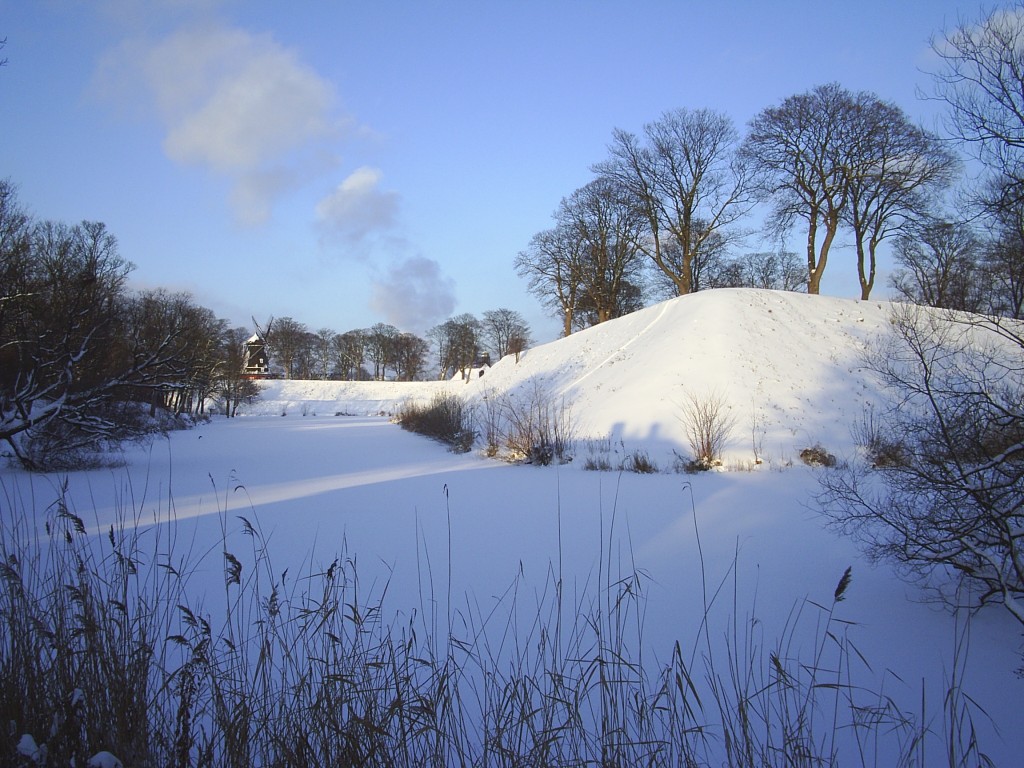
The fortress “Kastellet” build 1661-65:
Click on the map and use your zoom control and you see it in full screen size.

Kastellet was builded as fortress named Skt. Anna Skanse with 3 bastions and finished in 1640 by King Christian 4th to protect the entrance of Copenhagen Harbour:
Click on the map and use your zoom control and you see it in full screen size.

It was attacked by the swedish soldiers 10-11 february under King Karl 10 Gustav, but was not conquered. After the Peace Treaty between Sweden and Denmark in may 1660 King Frederik 3 decided to invite the Holland specialist in modern fortress ingineering Henrik Ruse to Denmark. He draw a fortress with 5 bastions with military barracks. He began the construction with 6000 men in 1661 and the 28. octobre 1664 the fortress was inaugurationed.
The fortress “Kastellet” built 1661-65:
Click on the map and use your zoom control and you see it in full screen size.

Kastellet has been in use ever since – today its 346 years. The fortress is guarded by armed soldiers and is a barrack, where more than 4-500 people work every day. Its the worlds oldest fortress in use!
In 1703 a Church Kastelskirken was build. Integrated with the church and behind it a prison was build. From their cells the prisoners had a small opening to the church, so they could here the christian gospel on sundays preachings.
The fortress “Kastellet” build 1661-65:
Click on the map and use your zoom control and you see it in full screen size.
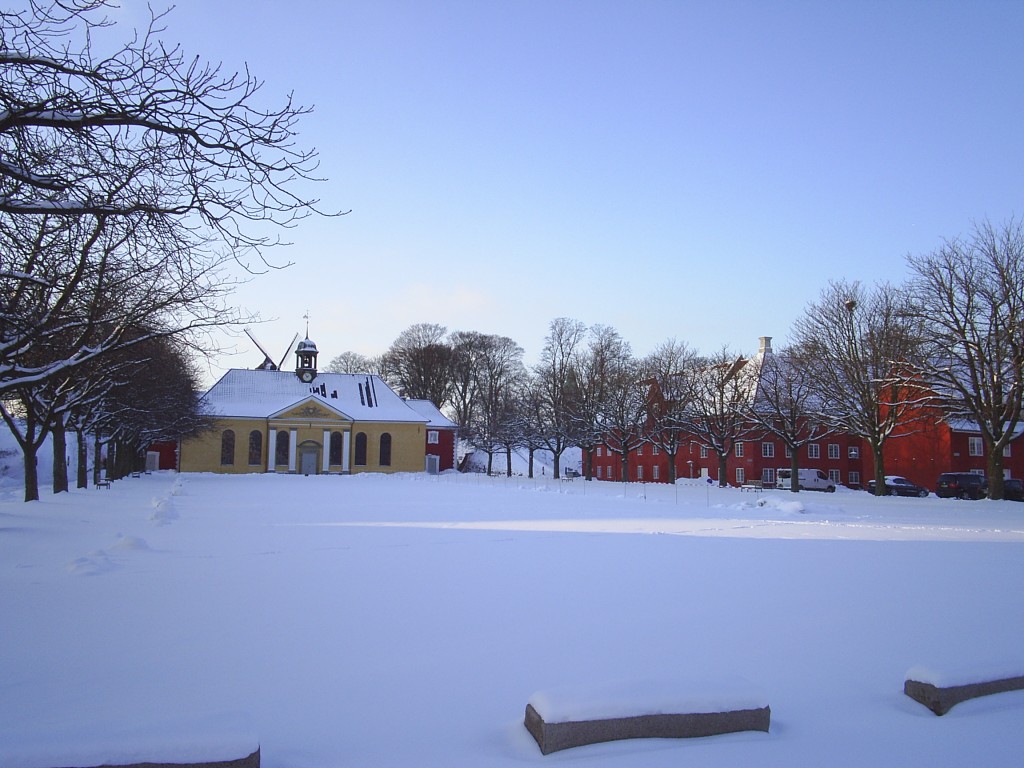
In 1725 a house for the commander of the fortress was built.
The fortress “Kastellet” build 1661-65:
Click on the map and use your zoom control and you see it in full screen size.

Map of Copenhagen City:
Click on the map and use your zoom control and you see it in full screen size. Photo: Erik K Abrahamsen, 10. october 2012
References:
København før og nu – og aldrig, Redaktion og billedtekster Bo Bramsen, Bind 1, Slotsholmen af Hakon Lund, Forlaget Palle Fogtdal 1987
København før og nu – og aldrig, Redaktion og billedtekster Bo Bramsen, Bind 7, Christianshavn af Claus M. Schmidt, Forlaget Palle Fogtdal 1989
København før og nu – og aldrig, Redaktion og billedtekster Bo Bramsen, Bind 10, Nørrevold, Østervold og Kastellet af Erik Wassard, Forlaget Palle Fogtdal 1990
Copyright text and photos Erik K Abrahamsen 2010
All rights reserved
Copenhagen, 21. december 2010
Have a nice walk!
Greetings
Erik
Updated 14. december 2018
Read more of my articles on my other homepage tvndk.wordpress.com Erik K Abrahamsen Blog among others 4 articles:
Oplev Københavns 1000 årige historie

